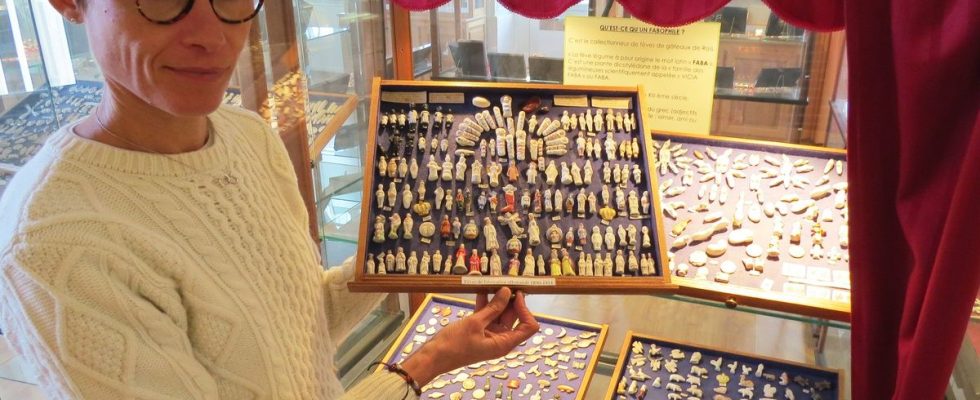EDIT. On the occasion of Epiphany, we invite you to reread this article published on January 13, 2019.
He has around 100,000 of them, stored in boxes and drawers. One of the largest collections in Europe. In Loire-Atlantique, the Blain museum, north of Nantes, is the specialist in the galette des rois bean. Some 10,000 copies are displayed in its windows. The opportunity to find out more about this essential accessory, which many French people secretly collect at home.
Why do we put beans in the galette des rois?
“Originally, the bean was this bean-like vegetable which we put in a pancake or a cake to designate the king of the day,” explains Stéphanie Briand-Viaud, head of the Blain museum. The practice dates back to Antiquity but it really developed in the Middle Ages to celebrate Epiphany. The bean could symbolize fortune or fertility. Threatened with disappearing during the French Revolution, the galette des rois has endured through the ages. “Today, we consume it from the end of December and throughout the month of January. »
What are the beans made from?
The vegetable bean was used until the 20th century. “The first porcelain beans were made in 1874 in Germany. It was not until the First World War that the French in turn began manufacturing, the Limoges region [Haute-Vienne]. » The 1960s were marked by the arrival of plastic beans, often white and flat. “We still find it in brioche pancakes,” notes Stéphanie Briand-Viaud. Finally, in the 1990s, beans appeared in glass paste, gold metal and, above all, ceramic. “Ceramic is now the overwhelming majority. And 95% made in China. »
What are the fashions and trends?
“For a long time, the beans represented religious symbols: the Virgin Mary, the angel, the Magi, the child… Then, the demand evolved and most of the themes were declined. » The Blain museum gives a broad overview: cars, animals, miniature toys, geographical maps to reconstruct, regional symbols, sports, tableware, celebrities… “Now, it’s mostly the news [Coupe du monde, Jeux olympiques, mort de Johnny…] which sets the tempo. And of course cinema. Walt-Disney releases series every year that are very successful. » Politics is no exception. The museum exhibits several beans representing presidential candidates. As well as embarrassing symbols “like François Hollande’s scooter or the Kärcher by Nicolas Sarkozy “.
How much are collectible beans worth?
“It depends on their age, their rarity and their manufacturer,” explains Stéphanie Briand-Viaud. Between fabophiles, as we call them bean collectors, the most sought-after models are those handcrafted by an artisan. “When you look at the level of detail, you can easily see the difference with industrial beans. » But those that sell for the most are generally old beans, in particular those designed before 1914. The Blain museum has 2,033 of them, from a donation from a Parisian collector. “Their value ranges from 2,000 euros, like this little angel from 1900, to several dozen euros. »
Are there beans and pancakes abroad?
Not really. We find a little bit of it in Belgium, England, and the United States. “But it is above all a French specialty. Even the Spanish, who celebrate the Three Kings, don’t have one. ” More than 30 million cakes are sold every year in France. “More and more consumers are choosing the cake based on the bean,” says the museum manager. Traders have understood the interest of standing out. There are even enthusiasts who buy their batch of beans directly from the baker without the cake. »

